Did you know that water damage is one of the most common causes of furniture deterioration? Whether it’s due to a burst pipe, a flood, or even an accidental spill, water can wreak havoc on your beloved furniture. But have you ever wondered how long furniture can actually sit in water before it becomes completely ruined? The answer may surprise you.
When furniture is exposed to water, the amount of time it can sit before being ruined depends on several factors, including the type of furniture and the extent of the water damage. Solid wood furniture is generally less porous and can withstand water exposure for a longer time. On the other hand, upholstered and fabric furniture are more susceptible to water damage and may become ruined more quickly. It’s important to assess the damage and take immediate action to prevent further deterioration.
Understanding Water Damage and Furniture Durability
Water damage can have a significant impact on the durability of furniture. The ability of furniture to withstand exposure to water depends on various factors, including the type of material, construction, and the level of water resistance.
Water damage can cause irreversible harm to furniture, leading to rotting, warping, and weakening of the structural integrity. Different types of furniture have varying degrees of resistance to water damage.
Solid wood furniture, with its dense and less porous nature, tends to be more durable and resistant to water damage compared to upholstered and fabric furniture. The natural oils and dense nature of solid wood act as a protective barrier against water penetration. This makes solid wood furniture more likely to be salvaged if it has been exposed to water.
In contrast, upholstered and fabric furniture are more vulnerable to water damage. The fabric upholstery, padding, and foam within these types of furniture can quickly absorb water, leading to mold growth, rot, and irreversible damage. If water damage occurs, prompt action is essential to prevent further deterioration.
Another essential factor in determining furniture durability in water is its level of water resistance. High-quality finishes and protective coatings applied to furniture can enhance its water resistance and provide an additional layer of protection against water damage. These finishes create a barrier that prevents water from seeping into the material, reducing the risk of damage.
In conclusion, understanding the impact of water damage on furniture durability is crucial in assessing the salvage possibilities. Solid wood furniture, with its inherent resistance to water damage, generally has a higher chance of being restored. Upholstered and fabric furniture, on the other hand, are more susceptible to water damage and may require immediate attention to prevent further deterioration.
Gauging the Rescue Possibilities for Waterlogged Furniture
When it comes to waterlogged furniture, determining the feasibility of salvage largely depends on several crucial factors. The extent of the water damage, the type of material, and the duration of exposure all play significant roles in assessing the restoration possibilities.
For solid wood furniture that hasn’t been submerged for an extended period, there is often a good chance of successful restoration. Solid wood is generally less porous and can withstand water exposure better than other materials.
However, salvaging upholstered and fabric furniture can be more challenging, particularly if they have been soaked for a long time or exposed to contaminated water. The nature of these materials makes them more susceptible to irreversible damage.
Consulting with professionals who specialize in water-damaged furniture restoration is highly recommended. They can evaluate the condition of the furniture and provide expert advice on the best course of action.
These experts have the knowledge and experience to determine whether the furniture can be salvaged and restored to its former glory. They can assess the extent of the water damage, identify potential risks such as mold or structural damage, and develop a customized restoration plan.
By enlisting professional help, individuals can gain a clearer understanding of the salvage possibilities for their water-damaged furniture. This knowledge allows them to make informed decisions about whether restoration is feasible or if alternative options should be considered.
From Drenched to Dried: The Restoration Process Explained
Restoring water-damaged furniture involves a series of steps to ensure proper drying and restoration.
The process may vary depending on the type of furniture, but generally involves cleaning, disinfecting, and drying the items.
For upholstered furniture, pressure washing and using industrial-strength dehumidifiers and fans can help remove moisture.
Wood furniture may require stripping the finish, cleaning, bleaching, and reapplying the finish.
Proper restoration techniques are crucial to prevent further damage and ensure the longevity of the furniture.
Special Considerations for Upholstered and Fabric Furniture
When it comes to salvaging water-damaged furniture, upholstered and fabric pieces require special considerations. Due to their porous nature, these types of furniture can be more challenging to clean, disinfect, and dry compared to other materials.
To effectively salvage upholstered and fabric furniture, several tactics can be employed. One method is pressure washing, which helps remove contaminants and moisture from the surface. Additionally, using dehumidifiers and fans can aid in drying the furniture thoroughly.
Another effective technique is hot water treatment, which helps eliminate bacteria and mold that may have developed as a result of the water damage. However, it is essential to assess the level of damage before attempting any salvage efforts.
In some cases, highly contaminated and porous upholstered furniture may need to be replaced instead of salvaged. Professionals with expertise in furniture restoration can provide invaluable guidance and recommend the best salvage strategies for upholstered and fabric furniture.
Category of Water Damage: What You Need to Know
When it comes to water damage, understanding the category of the water is crucial in assessing the severity of the damage and determining the appropriate course of action. Water damage is generally categorized into three levels based on the source and level of contamination: Category 1 (clean water), Category 2 (grey water), and Category 3 (black water).
Category 1: Clean Water
Category 1 water, also known as clean water, refers to water from a clean source such as a broken supply line or a leaky faucet. This type of water is generally safe and does not contain significant contaminants. However, even clean water can cause damage if left untreated for an extended period.
Category 2: Grey Water
Grey water, identified as Category 2 water, is water that contains some level of contaminants. This can include water from sources such as a washing machine overflow, dishwasher leaks, or clean water mixed with dirt or other substances. While not as hazardous as Category 3 water, grey water may still pose health risks and requires proper handling and treatment.
Category 3: Black Water
Category 3 water, also known as black water, is highly contaminated and potentially dangerous to human health. This type of water includes sewage backups, flooding from rivers or streams, and water that has been stagnant for an extended period. Black water can contain harmful bacteria, pathogens, chemicals, and other hazardous substances. It is essential to exercise extreme caution and seek professional assistance when dealing with Category 3 water damage.
The category of water damage directly impacts the salvage possibilities for water-damaged furniture. Clean water damage typically offers the highest chances of successful restoration, while grey water damage may require more thorough cleaning and disinfection. Black water damage often necessitates extensive disposal and sanitization measures due to the high level of contamination.
Understanding the category of water damage is also crucial for safety considerations. When dealing with contaminated water, it is important to take proper precautions to protect yourself and others from potential health hazards. Consulting with professionals experienced in water damage restoration can provide expert guidance on handling different categories of water damage effectively.
Timelines and Tactics for Salvaging Wood Furniture
When it comes to salvaging water-damaged wood furniture, time is of the essence. Prompt action and appropriate tactics can make a significant difference in the restoration process. If wood furniture has been saturated for a prolonged period, it may unfortunately need to be discarded. However, there is hope for furniture that has experienced water damage within 24 hours.
The restoration of water-damaged wood furniture often involves a series of steps aimed at drying and rejuvenating the piece. Stripping the finish, cleaning the surface, bleaching to remove stains, and finally reapplying the finish are common practices in the restoration process. These steps help to remove any traces of water damage and restore the furniture’s appearance and functionality.
Acting quickly is vital in salvaging water-damaged wood furniture. As soon as the damage is noted, it is important to consult with professionals who specialize in wood furniture restoration. They can provide expert advice on the best restoration timeline and tactics tailored to the specific piece of furniture and the extent of the damage. By relying on their expertise, you can increase the chances of successfully salvaging your beloved wood furniture.
Conclusion
Salvaging water-damaged furniture is possible with prompt action and proper restoration techniques. By understanding the factors that affect furniture durability, assessing the extent of damage, and following the appropriate restoration process, you can increase the chances of saving your water-damaged furniture.
When faced with water damage, it’s crucial to act quickly. Time is of the essence in preventing further deterioration and increasing the likelihood of successful restoration. Immediate action includes removing the furniture from the water source, drying it thoroughly, and consulting professionals for guidance and assistance.
Furthermore, taking preventive measures can help protect your furniture from water damage in the first place. Avoid placing furniture in areas prone to water exposure, such as basements or near leaky pipes. Address any water damage issues promptly, whether it’s a leaky roof or a malfunctioning appliance, to minimize the risk of damaging your furniture.
Consulting with professionals is invaluable in navigating the restoration process and ensuring the successful salvage of your water-damaged furniture. They can provide expert advice, recommend the best restoration techniques, and guide you through the necessary steps. With their assistance and your proactive approach, you can restore your furniture and extend its lifespan.







